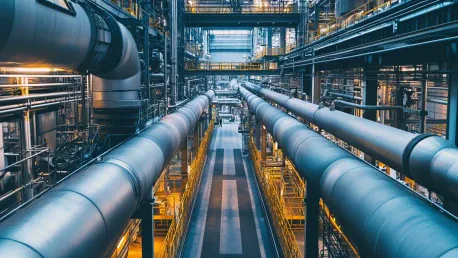The manufacturing sector is on the brink of a significant transformation as it moves from Industry 4.0 to Industry 5.0. Industry 4.0, characterized by the integration of cyber-physical systems and the Internet of Things (IoT), has already modernized factories with advanced data analytics and highly automated processes. However, Industry 5.0 promises to take this a step further by fostering a more human-centric approach that emphasizes collaboration between humans and machines, aiming to enhance creativity, sustainability, and innovation. As these emerging trends reshape the future of manufacturing, it is essential for companies to prepare themselves adequately for this evolution.
Evaluation and Planning
Performing a detailed analysis of your current capabilities and pinpointing areas for improvement is the first crucial step for any manufacturing company aiming to transition to Industry 5.0. This involves evaluating existing infrastructure, technology, and processes to identify strengths and weaknesses. After completing this assessment, it is imperative to develop a comprehensive strategy that outlines your roadmap for transitioning to Industry 4.0 and gradually incorporating Industry 5.0 concepts. This should include setting short-term and long-term goals, prioritizing initiatives, and allocating resources effectively.
The planning phase should also consider potential risks and challenges that might arise during the transition. These can include technological constraints, budget limitations, or resistance to change from employees. Addressing these challenges upfront will help ensure a smoother transition and increase the likelihood of successful implementation. The strategy should be adaptable, allowing for adjustments based on new findings or changes in the industry landscape. Regularly reviewing and updating your plan will keep your company aligned with evolving trends and technologies, ensuring you remain competitive in the fast-paced manufacturing sector.
Invest in Education
Providing your workforce with the essential skills to collaborate with advanced technologies is critical to the successful implementation of Industry 5.0. This involves investing in continuous education and skill development programs that focus on both technical and soft skills. Employees should be trained to work alongside intelligent machines, understanding how to leverage automation and advanced analytics for improved decision-making and productivity. Continuous learning initiatives can include workshops, online courses, and hands-on training sessions tailored to different roles within the organization.
Additionally, fostering a culture of innovation and lifelong learning will empower employees to embrace new technologies and processes more readily. Encouraging cross-disciplinary learning and collaboration can also lead to more innovative solutions as employees from different backgrounds bring unique perspectives to problem-solving. To ensure the effectiveness of these educational initiatives, companies should regularly assess the impact of training programs and make adjustments as needed. By prioritizing education and skill development, manufacturers can build a more agile and adaptable workforce prepared for the challenges and opportunities of Industry 5.0.
Partner with Experts
Collaborating with technology providers, academic institutions, and industry specialists is vital for staying updated on the latest advancements and best practices in the manufacturing sector. Forming strategic partnerships can provide access to cutting-edge technologies, research, and insights that can drive innovation and improve operational efficiency. For instance, working with IoT solution providers can help integrate smart sensors and data analytics into your manufacturing processes, enhancing real-time monitoring and decision-making capabilities.
Engaging with academic institutions can also offer numerous benefits, such as access to pioneering research, opportunities for collaborative projects, and a pipeline of skilled graduates who can bring fresh ideas and expertise to your organization. Additionally, participating in industry consortia and attending conferences or seminars can provide valuable networking opportunities and insights into emerging trends and technologies. These collaborations can also facilitate the sharing of knowledge and best practices, enabling companies to learn from the experiences of others and avoid common pitfalls. By partnering with experts, manufacturing companies can stay ahead of the curve and better navigate the complexities of Industry 5.0.
Trial Projects
Initiating trial projects to test new technologies and methodologies is a prudent approach to transitioning to Industry 5.0. These pilot projects allow companies to experiment with innovative solutions on a smaller scale before committing to full-scale implementation. This iterative process helps identify potential issues and provides the opportunity to make necessary adjustments and optimizations, thereby reducing the risk of costly failures when scaling up. Moreover, trial projects can serve as proof of concept, demonstrating the benefits of new technologies and garnering support from stakeholders within the organization.
When selecting projects for trials, consider focusing on specific areas where new technologies can have the most significant impact, such as enhancing production efficiency, improving product quality, or reducing operational costs. Involving cross-functional teams in these projects can also provide diverse perspectives and foster collaboration across departments. Regularly reviewing the progress and outcomes of trial projects will help refine your approach and build a robust framework for implementing Industry 5.0 initiatives more broadly. By adopting a phased approach and leveraging insights gained from trial projects, manufacturers can mitigate risks and ensure a smoother transition to Industry 5.0.
Emphasize Sustainability
The manufacturing sector stands on the verge of a major transformation as it transitions from Industry 4.0 to Industry 5.0. Industry 4.0 has revolutionized factories with the integration of cyber-physical systems and the Internet of Things (IoT), allowing for advanced data analytics and high levels of automation. Yet, Industry 5.0 aims to push these advancements even further by promoting a human-centric approach that emphasizes the synergy between humans and machines. This new wave aspires to enhance creativity, sustainability, and innovation by enabling more collaborative interactions between workers and technology.
While sophisticated machines and automated systems have optimized productivity in Industry 4.0, Industry 5.0 envisions a future in which human ingenuity works in tandem with these automated systems, bringing a balanced approach to complex problem-solving and innovation. As these emerging trends are set to reshape the landscape of manufacturing, it is crucial for companies to adequately prepare for this seismic shift. Embracing the core principles of Industry 5.0 can lead to unprecedented advancements in manufacturing, marking a new era where both human and technological capabilities are maximized.









